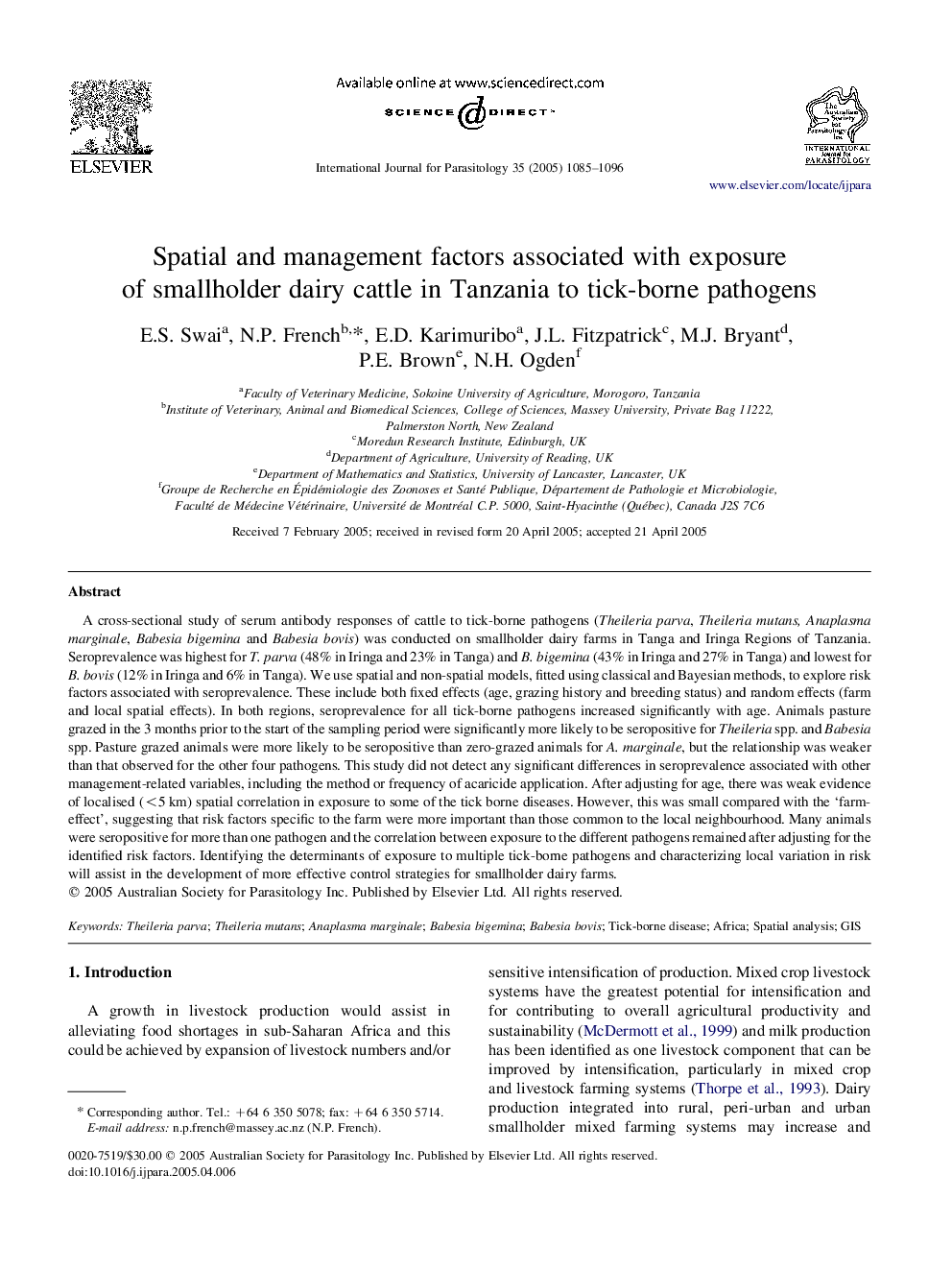| Article ID | Journal | Published Year | Pages | File Type |
|---|---|---|---|---|
| 8979698 | International Journal for Parasitology | 2005 | 12 Pages |
Abstract
A cross-sectional study of serum antibody responses of cattle to tick-borne pathogens (Theileria parva, Theileria mutans,Anaplasma marginale, Babesia bigemina and Babesia bovis) was conducted on smallholder dairy farms in Tanga and Iringa Regions of Tanzania. Seroprevalence was highest for T. parva (48% in Iringa and 23% in Tanga) and B. bigemina (43% in Iringa and 27% in Tanga) and lowest for B. bovis (12% in Iringa and 6% in Tanga). We use spatial and non-spatial models, fitted using classical and Bayesian methods, to explore risk factors associated with seroprevalence. These include both fixed effects (age, grazing history and breeding status) and random effects (farm and local spatial effects). In both regions, seroprevalence for all tick-borne pathogens increased significantly with age. Animals pasture grazed in the 3 months prior to the start of the sampling period were significantly more likely to be seropositive for Theileria spp. and Babesia spp. Pasture grazed animals were more likely to be seropositive than zero-grazed animals for A. marginale, but the relationship was weaker than that observed for the other four pathogens. This study did not detect any significant differences in seroprevalence associated with other management-related variables, including the method or frequency of acaricide application. After adjusting for age, there was weak evidence of localised (<5Â km) spatial correlation in exposure to some of the tick borne diseases. However, this was small compared with the 'farm-effect', suggesting that risk factors specific to the farm were more important than those common to the local neighbourhood. Many animals were seropositive for more than one pathogen and the correlation between exposure to the different pathogens remained after adjusting for the identified risk factors. Identifying the determinants of exposure to multiple tick-borne pathogens and characterizing local variation in risk will assist in the development of more effective control strategies for smallholder dairy farms.
Keywords
Related Topics
Life Sciences
Immunology and Microbiology
Parasitology
Authors
E.S. Swai, N.P. French, E.D. Karimuribo, J.L. Fitzpatrick, M.J. Bryant, P.E. Brown, N.H. Ogden,
